Dragon Quest may be one of the first Japanese Role Playing Games using mechanics still used today, but it’s certainly not the first. It was a trailblazer that inspired and led a charge by Japanese game designers. However, there were some interesting games before it. This is the history of JRPGs (or the history of Eastern Role-Playing Games according to wikipedia).
Table of Contents
The Dark Ages of Japanese Role Playing Games
The period before Dragon Quest came out is commonly referred to as the Dark Ages of Japanese Role Playing Games. The titles that tried something new were clunky and difficult at best and unplayable and crazy at worst. Let’s not forget that the Japan from the 1970s and early 1980s was populated by computers made in Japan. There were a few consoles, that is Pong consoles, manufactured by a wide range of companies, from Nintendo to Mitsubishi. However, experimentations, like the first few proto-JRPGs, were on computers and only some artifacts remain.
Among the first publishers to catch the role playing game train in Japan was Koei. Better known for their strategy games and Dynasty Warriors franchise nowadays, the Japanese developer played an active role in the creation and popularization of role playing game in its home country.
Moreover, Koei was accounting for half of the JRPG releases by the end of 1983. Their first attempt was titled The Dragon & Princess. A text-based game released in December 1982, it was later updated to incorporate graphics. Players typed their command on the keyboard in order to progress. The ingredients of the RPG were there: a team, a dungeon, monsters and equipment management.
Then a strange attempt happened with Danchi-zuma no Yūwaku or Seduction of Condominium Wives in June of 1983. As a condom salesman, you go door-to-door trying to seduce the lonely housewives. How more Japanese can it get? This one incorporated a first person view with vector graphics and colored character sprites. We can also include Spy Daisakusen (Mission: Impossible Japanese title) from Pony Canyon.
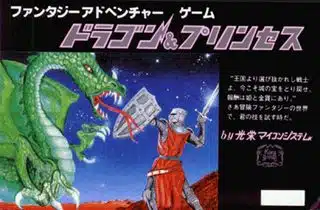
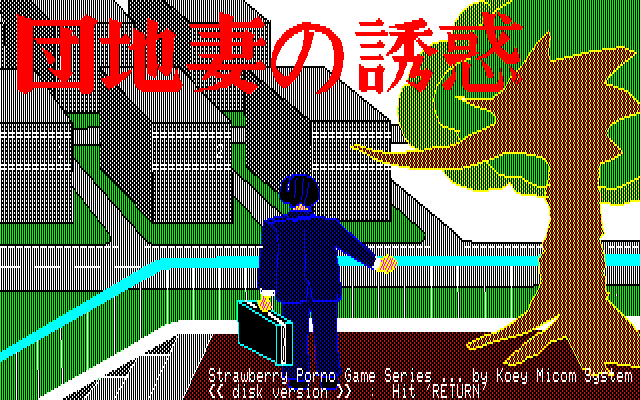
A first hit coming from a Dutch in Japan
The last pre-Dragon Quest game that marked Japan surprisingly didn’t come from a Japanese developer but a Dutch one. Henk Rogers, who would later gained fame securing the rights to Tetris for Nintendo from the USSR in 1989, was an avid tabletop role playing game player and had a knack for game design. Living in Japan for a few years, he noticed a gap in the Japanese market.
At a time when Ultima and Wizardry were all the rage in the West, there was nothing like this in Japan for Japanese players. Rogers therefore aimed to create the best game for them. The Black Onyx released in January 1984 and it bombed, big time. It sold only five copies for the first two months.
A first-person dungeon crawling, The Black Onyx was perhaps too different from what Japanese players were used to. Furthermore, the game relied heavily on Western fantasy aesthetics. But Rogers didn’t give up that easily. Indeed he insisted on meeting, along with a translator as he was not speaking Japanese, each and every PC Magazine editor.
He sat with them, demonstrated the game and hopefully would get some coverage. And it worked! Not only did journalists finally understood the interest for a game like this but The Black Onyx would go on to be the first RPG hit in Japan! It sold 10,000 copies the next month and would go on to sell a total of 150,000 units a year later.

A fiery Dragon
But then, it happened. After a contest held by the newly formed Enix, the development team was formed right then and there. A few months later a legend was born. Dragon Quest came out on May 27 1986 and was a game changer (pun intended).
Drawing its inspiration from other games such as Wizardry, Ultima or Dragon Slayer, Dragon Quest offered a rich, long and intense adventure. Random first person encounters established it as a rule for JRPG as many others would use following the massive success of Enix’s release. What made it so great was the fact that the developers chose the Famicom instead of the more obvious computer.
Nintendo’s system was on the rise and showing no sign of slowing which explain this choice. For the developers, it also meant fewer buttons. Therefore they had to simplify everything from the menu to moving the character using a top down view.
The result was crafted with such mastery that it sold over 2 million copies. The game eventually came out in the United States more than 3 years later in August of 1989 under the moniker Dragon Warrior. To this day, Dragon Quest, or DraQue as the Japanese called it, is more successful in its native land than any other video game series.

Revised and updated but not final
The next megaton in JRPG came out only one year after Dragon Quest. Hironobu Sakaguchi a Tokyo-based developer at Square was designing games for the Famicom. But he had enough of the fast-paced games and wanted to come up with something meaningful to him or he’d quit. Needless to say, he was impressed and envious of Dragon Quest success.
But he’d change of few things and that he did. After months of work with a small team of developers, Final Fantasy came out on December 18 1987. Like its counterpart from Enix, it was a huge success. Easy to use with a compelling time-travelling-based story, players loved Final Fantasy. It would eventually come out in North America almost three years later in May 1990. Then the rest is history and led to the best period in JRPG history.

Golden Age for a golden genre
Following those game changers, were a whole lot of titles from various publishers on as many platforms. While the West was coming up with ideas of their own but quickly faced a wall, Japanese developers used some western franchises that were losing momentum and applied some of their magic to make them popular I the land of the rising sun. This is how Wizardry saw a revival in Japan or how the Ultima series got Japan-exclusive episodes on the PlayStation.
Sometimes using an anime style, sometimes with turn-based battles, Japan perfected the rules and applied this recipe to a whole lot of games either original or not leading to the golden age of JRPG occurring between 1991 (Final Fantasy IV) and 2004 (Dragon Quest VIII).
The 16 to 128 bits era saw the best Japan had to offer in terms of role playing games. Most of them are now regarded as classics. Franchises such as Suikoden, Tales of, Star Ocean, Persona, or Grandia were born during those years. Some were short lived like Chrono Trigger and Chrono Cross, Baten Kaitos and Baten Kaitos Origins.
But as the 6th generation of consoles was drawing to a close, and development costs were rising, the Japanese game development scene took a dive that would take a whole generation to recover from.
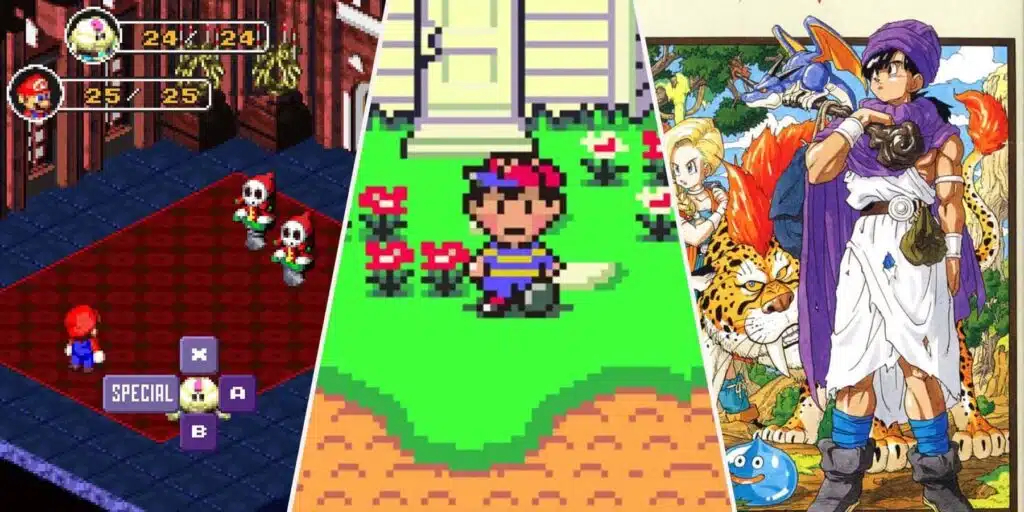
Missed opportunities for Japanese Role Playing Games
The 7th generation of consoles or HD systems was a dark period for JRPG fans and developers alike. As the graphics were improving, the development costs skyrocketed. It was not uncommon to be in the double-digits millions of dollars.
Whereas the previous generation allowed for smaller teams to develop games, it was not true or viable anymore. The newer generation of systems namely the PlayStation 3, Xbox 360 or even the Nintendo Wii, required more manpower. Teams needed to be bigger to tackle huge projects such as Final Fantasy XIII. It would go on to be Square Enix’s first huge multiplatform game in order for them to recoup the costs.
The world was changing, a faster internet was now available in most of developed countries. New parameters needed to taken into consideration. As the costs rose, it killed the medium-ranged projects, the so called AA games that were numerous on previous generations. It was survival of the richest. The fittest needed resources in order to be able to launch a high scale project.
Digital gaming was not there yet, nor were mobile games, although they started earlier in Japan. Few notable JRPGs were released on the 7th generation at least on the home console side. Among those are the Final Fantasy XIII trilogy, NieR, Blue Dragon and Lost Odyssey. Both of them were actually designed by Hironobu Sakaguchi and partly financed by Microsoft in exchange of a console exclusivity.
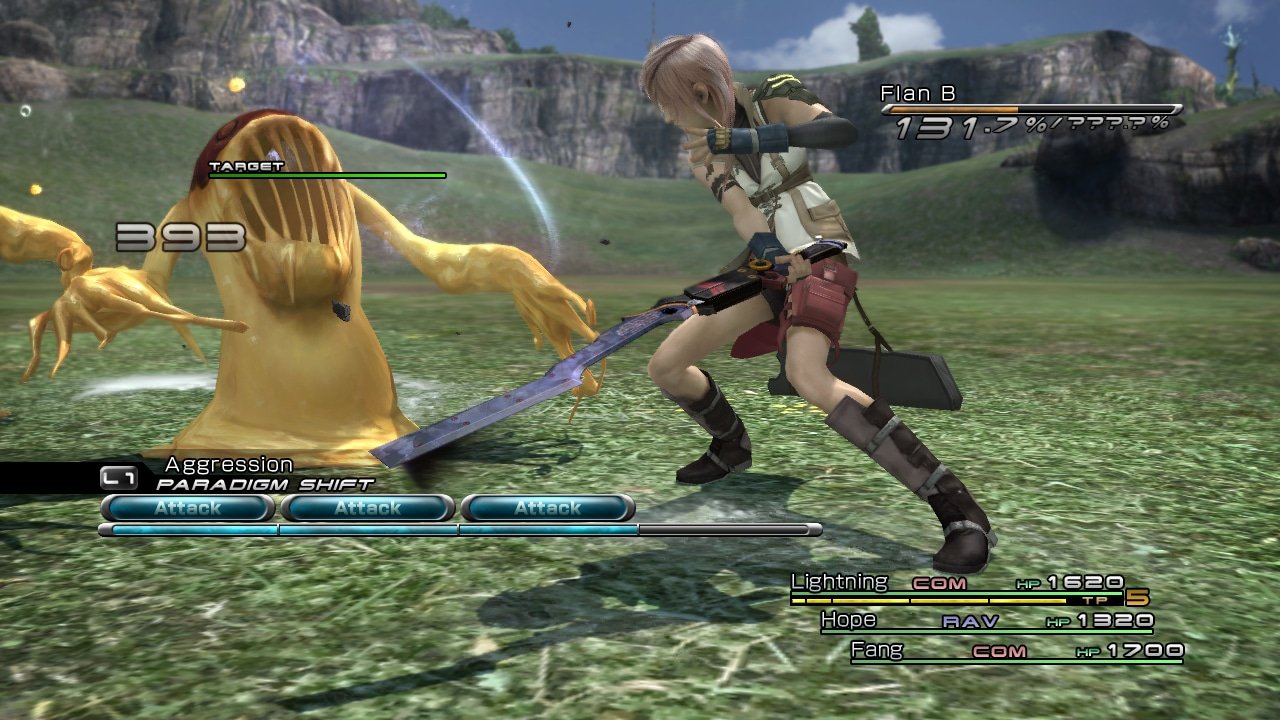


Revival of Japanese Role Playing Games
To the seasoned gamer and JRPG fanatic, it feels like since the release of the PlayStation 4, the Japanese video game industry was reborn. While we only had a handful of JRPG for the previous generation, this current one is almost spoiled.
Thanks to the rise of independent developers and mobile gaming, JRPG is back. Between Final Fantasy, Nier, Persona, Tales of, Star Ocean, there are numerous franchises aiming to bring the Japanese RPG to a wider audience. Even Square Enix launched a dedicated entity called Tokyo RPG Factory whose developers’ goal is to create Japanese role playing games.
Their first two games, I am Setsuna and Lost Sphear were charming. Let’s not forget all the remasters and remakes—whether we like them or not—that allow younger players to experience works of art in high definition such as Kingdom Hearts or Secret of Mana. The Japanese RPG is definitely back on track.
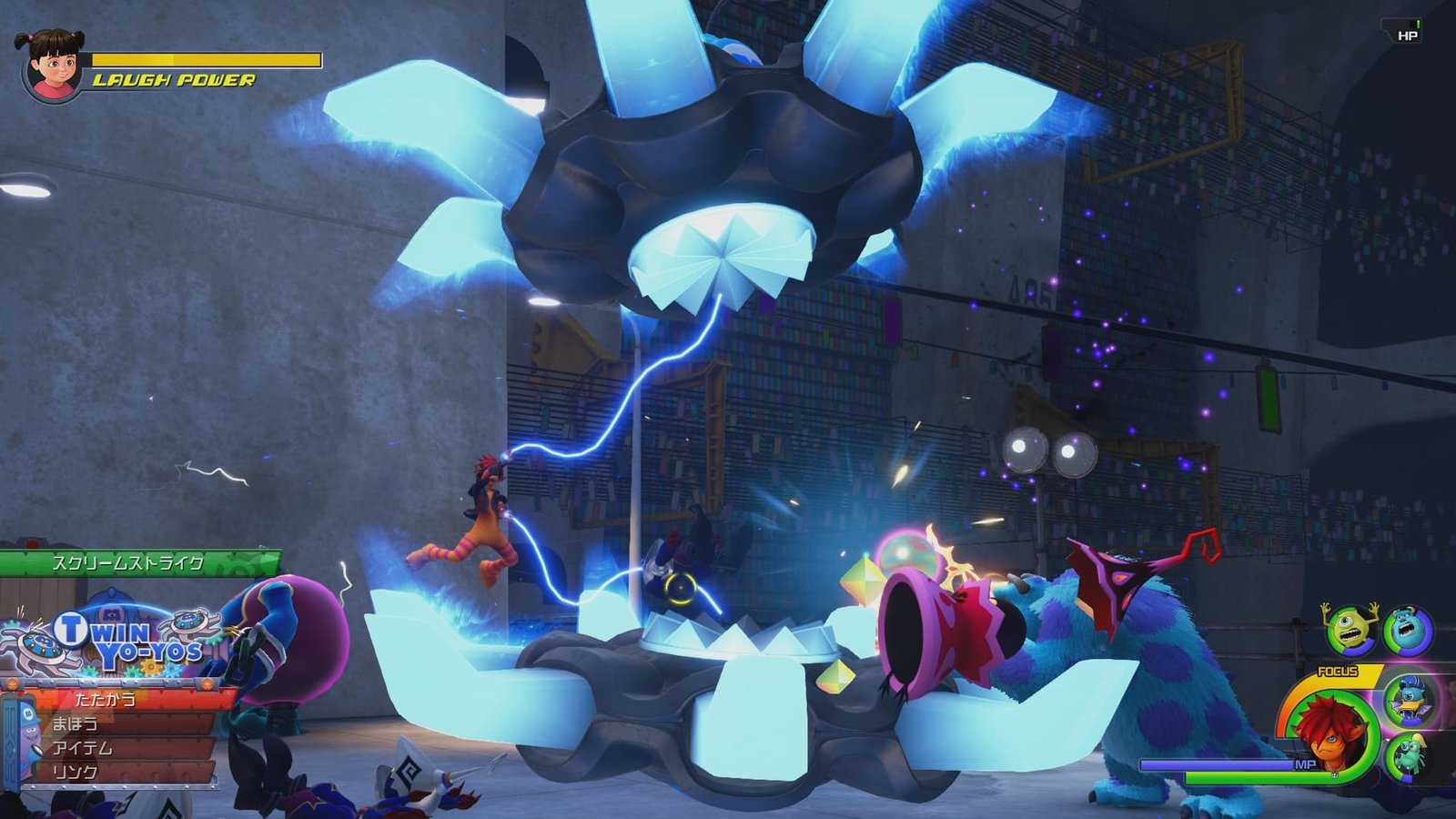



The History of JRPGs keeps writing itself
With the current console generation, such as the PS5, the Xbox Series X|S and the Nintendo Switch, the history of JRPGs adds more pages to its book and is far from being over.
Granted we mainly see sequels after sequels (Final Fantasy XVI for example), spin-offs (Persona 5 Strikers, Persona 5 Tactica), remakes and remasters (Final Fantasy VII Remake, Final Fantasy VII Rebirth, Persona 3 ReLoad, Baten Kaitos I and II HD Remaster), we still have new IPs from big and small publishers such as Metaphor Re Fantazio (Atlus), Forspoken (Square Enix), Monark (NIS), or Fantasian (Mistwalker).
Moreover, online marketplaces such as the revamped PlayStation Plus, the Xbox Game Pass (and PC Game Pass), Steam, Epic Games Store or GOG.com, offers great way to play JRPGs, sometimes day one. What better way to contribute to the history of JRPGs.
Learn more about the History of JRPGs
The Entire History of Japanese Role-Playing Games (JRPGs): From Dragon Quest to Shin Megami Tensei
The world of video games is vast and diverse, with a rich history full of innovation, creativity, and evolution. In particular, the genre of Japanese Role-Playing Games (JRPGs) has played a key role in shaping the gaming landscape. Known for their immersive gameplay, intricate storylines, and richly detailed worlds, JRPGs have become a major success both in Japan and around the world.
Japanese role-playing games, or JRPGs, trace their roots back to the early era of gaming when developers began exploring the vast potential of video game RPGs. This genre has its roots deeply planted in the Japanese video game industry, with heavy hitters like Dragon Quest and Megami Tensei leading the way.
Dragon Quest, first released by Nintendo in 1986, was one of the first major successes in the world of JRPGs. The game, with its ambitious scope and delightful art design by Akira Toriyama, famed for his work on Dragon Ball, was a milestone in the genre. The success of Dragon Quest III and Dragon Quest IV solidified the series’ standing in the RPG genre and paved the way for subsequent games.
In the realm of dungeons, dragons, and role-playing, another game also left a deep impression on gamers. The Dragon Slayer series, including the spin-off Dragon Buster, were among the first action RPGs and dungeon crawlers, introducing non-linear gameplay and real-time action elements. These games played a vital role in shaping the gameplay of future RPGs, setting the stage for games like Dungeon Explorer.
The 16-bit era of gaming witnessed the emergence of some of the genre’s most beloved titles, such as Chrono Trigger. With its innovative gameplay, the game quickly became a favorite among gamers, despite its mixed reviews in outlets like the Chrono Cross Review in the Nintendo Power65. The game’s success affirmed the genre’s commercial potential and underscored the appeal of JRPGs to a global audience.
Other notable titles in the genre include Phantasy Star and Star Ocean, which helped to solidify the action RPG subgenre. In the same vein, Shin Megami Tensei and its spin-off Devil Survivor built on the Megami Tensei series’ history, offering gamers a blend of engaging gameplay and complex narrative. The Shin Megami series, with its focus on dungeon crawling and random encounters, added another dimension to the JRPG genre.
Japanese imports such as these played a vital role in the evolution of Western counterpart games, introducing new gameplay elements and narrative techniques. Yet, despite the influence of these Japanese console role-playing games, the genre remained relatively unknown to many Western gamers until the release of titles like Final Fantasy VII. The game, published by Square Enix, was a major commercial success that brought the genre to the forefront of the Western gaming world.
The popularity of JRPGs led to the creation of tools like RPG Maker, which allowed users to create their own games in the style of classic JRPGs. This software introduced a new generation of gamers to the genre and inspired a wave of indie game developers to incorporate JRPG elements into their games.
In more recent history, titles such as Radiant Historia have continued to push the boundaries of the genre. Designed by a team including Hideo Kojima and Yuzo Koshiro, Radiant Historia’s innovative non-linear gameplay and ambitious scope were praised in a staff review by Retro Gamer, marking another milestone in the evolution of the JRPG genre.
In conclusion, the history of JRPGs is a testament to the creative spirit of the Japanese gaming industry. From the earliest days of Dragon Quest to the innovative gameplay of Shin Megami Tensei.
Japanese role-playing games (JRPGs) have been a cornerstone of the video game industry for decades. These games are renowned for their ambitious scope, intricate gameplay elements, and unique cultural flavor, differentiating them from their Western counterparts.
The Japanese video game industry, while often perceived as console-centric in the West, has a rich history of producing thousands of commercial PC games from the late 1970s to the mid-1990s. The Japanese market at the time was notably fragmented, leading to a plethora of game adaptations for different hardware platforms. One such example was Lode Runner, a game that required 34 conversions to different hardware platforms. Despite this initial fragmentation, the market eventually became dominated by platforms like the NEC PC-8801 and PC-9801, along with the Sharp X1, X68000, FM-7, FM Towns, and MSX and MSX2.
One key difference between Western and Japanese systems was the higher display resolutions of the latter, a feature designed to accommodate Japanese text. This distinction significantly influenced game design. Japanese computers also utilized Yamaha FM synthesis sound boards from the early 1980s, which enabled composers such as Yuzo Koshiro to produce highly regarded chiptune music for RPG companies like Nihon Falcom.
Japan’s earliest RPGs were released in 1982, with games like Koei’s “Underground Exploration” and “The Dragon and Princess”, which mixed adventure game elements with RPG mechanics. These early experimental Japanese RPGs, also known as “proto-JRPGs”, preceded the arrival of Western RPG titles like Wizardry and Ultima in Japan.
By 1983, the landscape of Japanese RPGs began to evolve with the introduction of titles like “Sword & Sorcery” and “Secrets of Khufu” by Koei and “Panorama Toh” by Nihon Falcom. These games began to incorporate more action and real-time combat mechanics, laying the groundwork for the action RPG subgenre.
The release of the game “Dragon Slayer” by Nihon Falcom in 1984 marked a significant milestone in the history of JRPGs. Dragon Slayer, a real-time hack & slash dungeon crawler, was a major success in Japan and is considered the first action role-playing game. It played a vital role in popularizing the action RPG subgenre on Japanese computers during the mid-1980s.
The popularity of JRPGs continued to grow with the release of games like Dragon Quest, which brought the genre to mainstream consoles. The Dragon Quest series, with its unique blend of fantasy themes and turn-based combat, quickly became a phenomenon, paving the way for other JRPG heavy hitters such as Final Fantasy.
